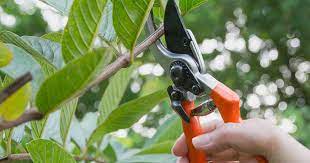Your garden, this spring: What to do in April
Spring is here.
I know it is because my yard is full of lovely purple flowers - unfortunately from a healthy crop of henbit – so you know I’m spending a lot of time trying to “unweed” my landscape.
Though it now officially is spring, that doesn’t mean we won’t still have some cold weather. As I’m writing this, the temperature is 34 degrees with a wind chill of 27, so I won’t be working outside until later today. I’m checking my list of plans for the landscape and using the monthly tasks from "Lone Star Gardening" by Neil Sperry and "Texas Garden Almanac" by Doug Welsh.
Planting tips
Plant tomatoes, peppers, corn, beans, squash, cucumbers, melon and eggplant early in the month. You can lengthen the harvest period of fast-growing crops by sowing a second and third planting every couple of weeks.
Plant herbs such as sage, basil, parsley, rosemary, mint and thyme in beds and pots to add interest and plant other herbs in the vegetable garden.
Plant summer annuals to add color to the landscape. Some examples are moss rose, purslane, trailing lantanas, Dahlberg daisies, pentas, and angelonias for flowers; sun-tolerant coleus, copper plant, and ornamental sweet potatoes for foliage; and begonias, caladiums, and coleus in shady areas.
Plant perennials (quart or gallon sizes). Be sure to check the mature sizes, colors, and bloom times to ensure proper placement in your landscape.
Plant turfgrass. Bermuda can be planted from seed or sod. Plant St. Augustine, zoysia, and buffalograss from sod. Do your homework to be sure you are planting the correct variety for your needs.
Plant trees, shrubs, vines and groundcovers from nursery stock. Be sure to get advice from a certified professional to ensure that you will have the correct mature size and best type for your landscape.
Pruning tips

Mow the lawn at the recommended height. Don’t let it get too tall before mowing.
Prune spring-flowering shrubs and vines after they finish blooming. Use hand pruners to give a more natural look to the plant.
Prune trees to remove lower branches that cause excessive shade in turfgrass areas. Do not prune oaks until mid-summer or mid-winter to lessen the chance of oak wilt.
Prune fall perennials such as Mexican bush sage and fall asters to encourage fuller plants.
Remove dead blossoms from annuals, perennials, and roses so they will continue to bloom.
What to feed
Fertilize the turf. Use a fertilizer for your soil type – clay, sandy, or loamy – for best results.
Fertilize trees, shrubs, vines and groundcovers with the same all-nitrogen or high-nitrogen product used on your turf.
Fertilize vegetable and flower gardens with the same product used on your lawn and landscape plants. Remember to follow application instructions on the label for use in beds.
Fertilize container gardens with a high-nitrogen, water-soluble plant food. Follow the directions on the label.
Miscellaneous tips
Watch for signs of fungus or pests on plants. Treat the problem appropriately.
Watch for snails, slugs, pillbugs and thrips, and treat them with the appropriate product.
Cover plants you buy and are taking home in the back of the pickup. These plants can be wind-damaged easily so it is best to cover them with a sheet or shade cloth to protect them during the trip home.
Plant your new purchases soon. After planting, water the soil deeply.
Water when your plants need it. Watch your plants for wilting and leaf rolling to determine if they are stressed.
Mulch. This holds moisture and helps control weeds.
Last month, I mentioned looking at the landscape plans you made for this year before starting your spring planting. Planting a new area will add interest and quality to your yard and garden. Remember that a good source of plants that will survive and thrive in our area will be the Big Country Master Gardener Plant Sale in April. The online sale will start April 12, and the in-person sale will be April 15.
Watch our Facebook page and website for information about available plants and sale details.
BCMGA will offer several free education programs in April. There will be a program on irrigation at 6 p.m. on April 4 at the Abilene Public Library branch at the Mall of Abilene and the same program at 10 a.m. on April 14 at the Abilene Public Library downtown location.
We also will have the BCMGA Saturday Seminar from 9 a.m. to noon on April 29 at the Taylor County Extension Office Conference Room. The topic is propagation.
If you have any questions, call the Taylor County Extension Office at 325-672-6048 or email us at mgardeners@yahoo.com. We hope you will like us on Facebook and visit bcmgtx.org for all Big Country Master Gardener information and events.
This article originally appeared on Abilene Reporter-News: Your garden, this spring: What to do in April
